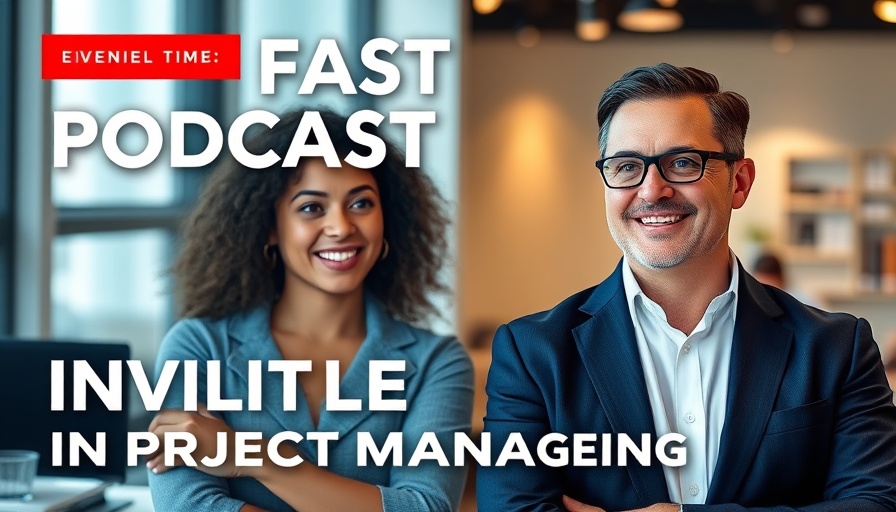
The Power of Invisible Leadership in Project Management
In the realm of project management, especially within the commercial construction sector, the traditional perception of a leader often aligns with someone who is at the forefront, commanding every meeting and decision. However, the latest insights from Anisha Manvatkar, a veteran program manager, challenge this notion by introducing the concept of 'invisible leadership.' This approach advocates for guiding projects without always being in the spotlight, ultimately leading to high-performing teams that can thrive.
Understanding Invisible Leadership
Invisible leadership is about empowering teams and ensuring that the project’s objectives are achieved collectively rather than through singular command. By embracing their team’s capabilities and facilitating their growth, leaders can foster an environment where innovation and performance flourish. Manvatkar’s insights into six cornerstone skills—such as defining vision, empowering teams, and utilizing AI—shed light on practical strategies that can be implemented by project managers, facility managers, and business owners alike in the construction industry.
Creating a Compelling Vision
At the heart of invisible leadership lies the ability to communicate a strategic “why” that resonates with every team member's work. By aligning tasks with a compelling vision, project managers can keep momentum even when priorities shift. One effective tactic is the exercise of mapping project objectives to a single executive OKR (Objectives and Key Results), which serves as a navigation tool during challenging phases of the project. This keeps everyone focused on the overarching goals and fosters a sense of shared purpose.
Plain Language Communication
Effective communication is crucial in any project, yet complexity can often lead to misunderstandings. Employing what Manvatkar refers to as 'Earth language'—using clear and straightforward terms—ensures that all stakeholders, from contractors to developers, fully grasp project objectives and updates. This method prevents confusion and streamlines discussions during meetings, allowing teams to focus more on solutions rather than interpretations of convoluted directives.
The Role of AI as a Sidekick
As technology continues to evolve, incorporating AI into project management processes can relieve teams of repetitive tasks and provide data insights. Manvatkar suggests treating AI as a sidekick rather than a replacement. This means using AI-driven tools for tasks such as collecting stakeholder feedback or triaging project risks, thereby allowing project leaders and other team members more space to engage in critical thinking and creative problem-solving.
Empowering Through Stealth Guidance
Being an invisible leader doesn't mean withdrawing fully from engagement; instead, it is about offering guidance that empowers teams to take ownership of their work. This can be approached by starting meetings with open-ended questions rather than directives, allowing team members to lead the conversation and contribute their ideas. This practice not only elevates the team’s confidence but also encourages innovation, driving projects forward at a faster pace.
Developing a Change-Ready Mindset
Lastly, nurturing a change-ready mindset within the team is critical for adapting to unforeseen challenges. Conducting pre-mortem exercises—where teams visualize potential project failures—enables them to surface hidden risks before they become problematic. This proactive approach to risk management cultivates resilience and prepares teams for agile responses to change.
Ultimately, implementing the principles of invisible leadership can lead to enhanced productivity and morale among team members while delivering successful project outcomes. As construction firms continually face market fluctuations and evolving technologies, adopting this leadership style will be key to not only surviving but thriving in today’s competitive environment.
As you consider how to refine your leadership strategies, take a moment to reflect on these insights and how they can be integrated into your current projects. Remember, leadership isn't just about visibility; sometimes the best leaders are those who create space for their teams to shine.
 Add Row
Add Row  Add
Add 




Write A Comment